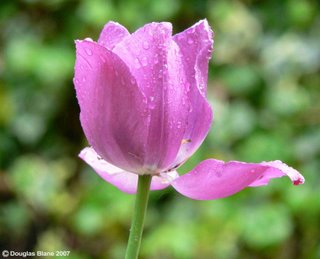
Daniel Holz, one of the guys at Cosmic Variance, raises interesting questions about art and science, arising from a talk he attended by Felice Frankel, a photographer who produces stunning scientific images.
He was surprised and disappointed, he says, by her insistence that she is not an artist and her photos are not to be considered art. He quotes her as saying: "This is why I am not an artist: I am deeply committed to maintaining the integrity of the science."
I agree that this is disappointing, but perhaps for different reasons. Holz thinks Frankel believes that being constrained to "reproduce the world as it is" means it can't be art. He disagrees with this, and cites the sonnet as a form in which rigid rules and high art work well together.
But as a photographic artist – whether she likes the word or not – Frankel is no doubt well aware that constraints are often conducive to creativity. Her vigorous rejection of artistic intent has, I am sure, other origins.
She is clearly anxious that her work will be criticised – almost certainly has been criticised - on the grounds that it is so accessible and aesthetically pleasing that it must misrepresent the science. This is precisely the same fear that prevented reputable scientists until recently from trying to explain their science clearly and appealingly to interested non-scientists.
Until people like Richard Dawkins and Paul Davies showed that attractive prose and scientific rigour were not mutually exclusive, a scientist who stooped to writing anything but the turgid stuff that fills the learned journals was committing a rather rapid form of professional suicide.
This is gradually changing, but disdain for the populariser still lingers in the loftier realms of academe, and far too few scientists are yet willing to write about their work for anyone other than their scientific peers.
Elegant and attractive prose does not have to distort science. And neither do beautiful, artistic images.
(The one at the top, incidentally, is by my son. He admits he's an artist.)


